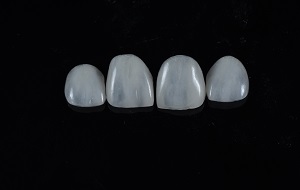TYPES OF COSMETIC DENTISTRY PROCEDURES
Cosmetic dentistry is a method of oral care that is done professionally with a focus on improving the appearance of the mouth, teeth, and smile. Although most cosmetic dentistry procedures are elective rather than necessary, treatment may give therapeutic benefits in some cases.
There are extremes of the treatment from simple to complex; some are simple and common, whereas others require specialized care.
Common types of cosmetic dentistry are:
1. Inlays and Onlays
Inlays and Onlays are also
known as direct fillings, made by Dental lab china, and they are used when the tooth has decayed from mild to
moderate levels or if there is not enough tooth structure to support a filling.
No damage is done to the tooth cusps, and according to the suggestion of an
expert, the inlay is kept directly over the tooth surface. There are some cases
when the damage is more, which means the cusps or large portion of the tooth is
damaged, and only used to cover the tooth's surface.
Inlays and Onlays are made at China Dental Laboratory to support strengthening teeth, restore the tooth's shape, and avoid further decay or deterioration.
2. Composite Bonding
Composite bonding refers to the repair of decayed, damaged, or discolored teeth using a material resembling the original tooth's color. Dentists at China dental laboratory drill out the tooth decay, apply the composite onto the tooth's surface, and sculpt it into the right shape before securing it with a high-intensity light.
3. Dental Veneers
Generally manufactured from medical-based ceramic, dental veneers are made individually for each patient to resemble the natural teeth. These veneers look exceptionally realistic and can solve maximum cosmetic problems starting from crooked teeth to cracked or damaged enamel or the gaps between two teeth. The dentist puts the veneer on the front of every tooth using dental adhesive.
4. Teeth Whitening
Teeth whitening is one of the most common and basic cosmetic procedures in dentistry. It is also known as teeth bleaching, performed at a dental office or China dental laboratory. Whitening must occur after plaque, tartar, and other debris are cleaned from every tooth present in the mouth. This cleaning helps in restoring the natural appearance. Teeth can also be bleached to get an even lighter shade than their original color. Over the years, teeth have become stained and worn from food, drinks, medication, and some personal habits, including smoking.
5. Implants
Dental implants replace the teeth after the loss of a tooth or teeth. The dentist's work includes inserting a small titanium screw into the jaw at the place of the missing tooth, which will support the crown. These implants are almost indistinguishable from the surrounding natural teeth, and once the bone and supporting tissues fuse with the implant, they are permanently secured into the gum. There are some precautions and special care that a patient should take. They must practice oral hygiene during the implant procedure by cleaning plaque and food debris from the area. If a person is considering any implantation or any other dental procedure, it is essential to find a dentist who will offer client-centric options.
6. Teeth cleanings
This is indeed the most
common reason for people to visit a dentist. Most dentists recommend cleaning
teeth after every six months, and some have given a year as their
recommendation. Indeed, it is significant for oral health and teeth appearance.
More than a toothbrush used daily is required and never will be as efficient as
the tools used by China Dental
Laboratory for cleaning teeth. An annual or semi-annual visit for cleaning
will help keep teeth healthy, shiny, and strong. Plus, a cleaning causes minimal
discomfort, so fretting is not necessary!




Comments
Post a Comment